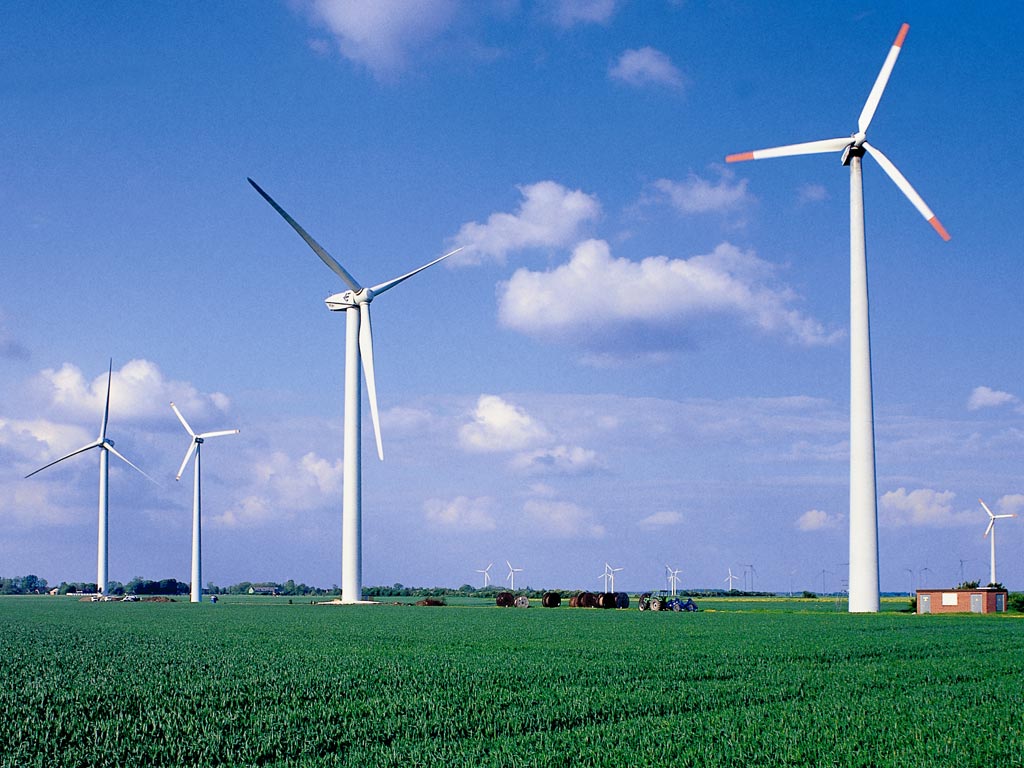Turkish Boom in Wind Power Investments
Wind power boasts the second highest share of renewable energy production in Turkey, and its prospects look brighter each day. According to 2010 data from the Turkish power-generation corporation, electricity generated from renewable resources had a 19.7% share of total power: 18.5% hydroelectric energy, 0.8% wind power and 0.4% for other renewable s such as landfill gases, bio-gas and biomass. By comparison, 48.6% of total energy was supplied by natural gas and 31.7% by petroleum and coal. Yet by end of 2011 this breakdown had begun shifting in favor of renewable resources, with wind energy now amounting to 2% of total power generation in Turkey.
 |
| Turkey wind farm map |
However this “act of good faith” would result in a surprisingly large number of applications piling up on EMRA’s desk. Turkey’s total predicted technical-economic wind potential was 38,000 MW, yet the 752 power generation license applications submitted by November 1, 2007 would amount to 78,000 MW; it took the EMRA 3 years to screen all of these projects. Due to limited transformer capacity, the Turkish Electricity Transmission Corporation would hold a competition to resolve conflicts arising from multiple applications for the same region. When two or more projects were in conflict for the same region, the ones that added the most value per kWh energy produced would be approved. What were once incentives were now constraints. As a result, some investors held back while others tried to outbid as much as possible, pushing small investors out of the picture. One of the world’s most popular sources of renewable energy, wind energy is not usually accustomed to such “adverse-incentive” schemes.
 |
| Wind farm |
Strategic Target Plan
In accordance with the Ministry of Energy’s Strategic Plan, Turkey is targeting 20,000 MW installed wind-power capacity by the end of 2023. Today that number is just 1,800 MW, meaning the strategic plan calls for an additional 18,200 MW of installed capacity. Each MW of wind-power installed requires an investment of approximately 1.3 million USD. The turbine bears the lion’s share of this burden, amounting to 70 percent of the total cost. Meanwhile a new project under the name MILRES is gaining momentum, aiming to further develop Turkey’s wind energy sector thanks to the invaluable contributions of 126 professionals from local universities, industrial associations and governmental institutions. This project will allow Turkey to manufacture its own wind turbines instead of importing them from China. Furthermore, the 2011 Law on Utilization of Renewable Resources was amended in favor of domestic production. The government normally pays 7.3 dollar cents per kWh energy produced via wind power, but the law now brought additional incentives for domestic producers: 0.6 dollar cents were added for producers using domestically-manufactured towers, 0.8 dollar cents for domestic blades, 1.3 dollar cents for domestic rotors and nacelles and 1.0 dollar cents for domestic generators and electronics.
 |
| Wind farm |
With plenty of wind power projects on the way, EMRA is no longer accepting license applications. But with the new renewable-energy law enacted this past March steps have been introduced allowing for the generation of electricity without a license, provided the installed capacity does not exceed 500 kW. As a result, the number of companies offering turn-key power plant installation has increased, as has the manufacture of low-capacity turbines as well as related R&D. This new boom in the market makes Turkey an attractive destination for foreign investors and vendors seeking to spread their know-how and technology to new markets. But Turkey’s ambitions aren't just limited to erecting wind farms on its soil; it also wants to eventually compete with China in the manufacture of wind turbines. To make up for its limited know-how, Turkey is more than willing to open up to the world. In order to promote the Turkish energy market, the sector organizes many trade fairs as well as regular networking events, all in the name of attracting foreign investment. With its advantageous geography, it seems Turkey will soon be strengthening its foothold in the energy sector, all thanks to rising R&D investments and the growing collaboration between universities and the private sector.












0 Comments :
Post a Comment